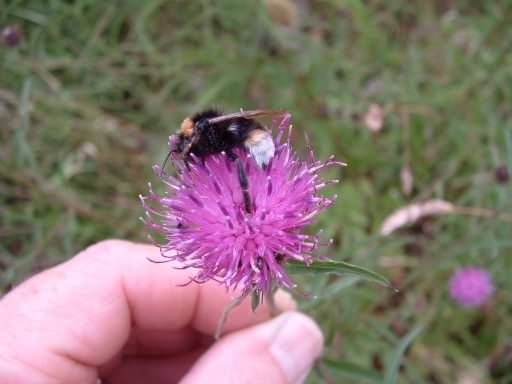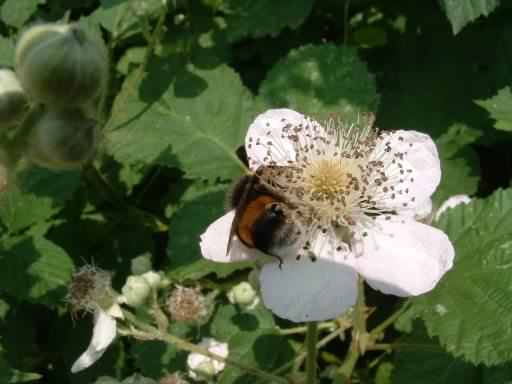
Photos ©2004–

Close window

Click any photo for a larger image
White Tailed Bumblebee - Bombus lucorum
Family - Apidae
With two yellow bands across the body (one on its collar and one on the abdomen) it is named from its distinctive white tail. As with all bumble bees it has a much larger, hairier body than a honey–bee. There are three castes; workers, drones and queens. The body length of a worker bumblebee is approximately 16mm (0.7in). Bumblebees are the main pollinators of Clovers, Alfalfa, and some fruits, in Northern Europe honeybee pollination is limited by lower average temperatures, so bumblebees have become the main crop pollinators. Imported into New Zealand (where there are no native bumblebees) to pollinate clover as a forage crop. Modern glass house cultivation methods sometimes use bumblebee colonies for pollination. Bumblebees are widely distributed throughout Britain.
Like the honeybee, bumblebees have a yearly cycle where queens mate late in the summer and then hibernate over winter, emerging in the spring to create a new colony. The queen lays 6–20 eggs which emerge as adult female workers after pupating. These workers live for about 4 weeks, during which time the queen lays more eggs, some of which then emerge as males if current food stores are adequate, the males leaving the nest after a few days. The next emergence of adults may contain queens for the next years colonies. A bumblebee colony can reach 400 adults if the local food supply is large enough to support them.
 Photos ©2004– |
 Close window |
 Click any photo for a larger image |
Site design ©1999– Brickfields Country Park - Privacy -